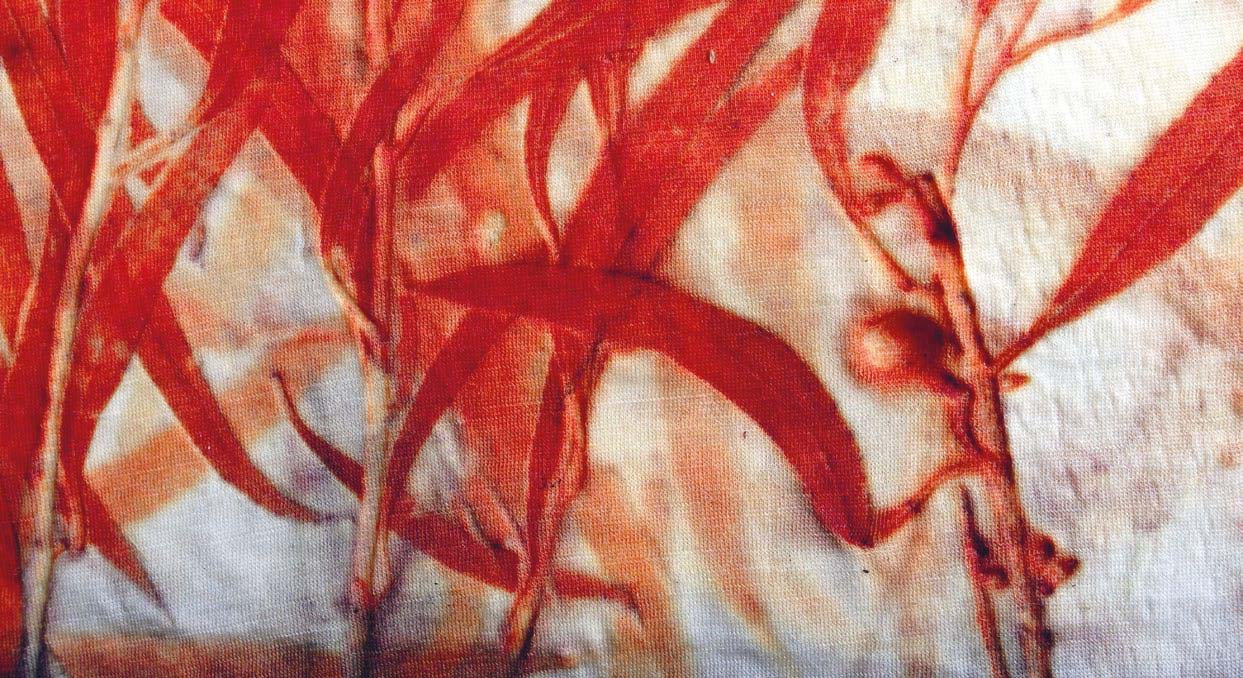I’ve spent the last seven years wandering the world, teaching people from all walks of life how to use plants to dye cloth. I didn’t carry dye materials between countries because most plants yield some kind of colour and it’s better to investigate local species than import dyes, especially when producing some dyes may compromise their source environment. For example, logwood (Haematoxylum campechianum, a Mexican and Central American species) yields exquisite purple, blue, black and brown dyes; however, the heartwood is used and harvesting it kills the trees of this increasingly rare genus. The best dyes come from older trees and even if seedlings are planted to replace those that are felled, it takes at least 20 years for those to mature.
On the other hand, respectable shades of purple and black can be made by boiling the leaves of the Australian species Corymbia citriodora (lemon-scented gum) in an old iron pot. Boiling the leaves in a non-reactive pot, such as stainless steel or enamel, yields a lovely chocolate brown. It makes much more sense to me to use the leaves of a plant that is relatively common, and a good stiff breeze will deliver abundant dye material to the ground at your feet.

